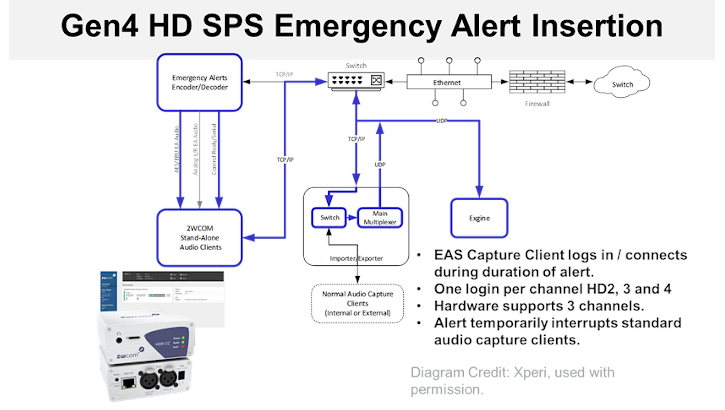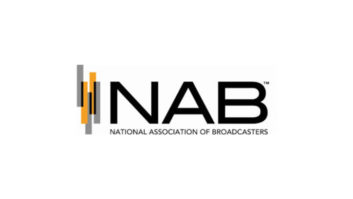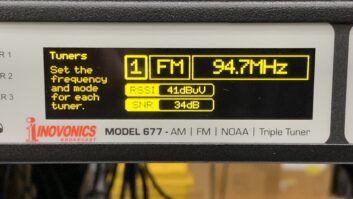A highlight of our recent Pro Audio & Radio Tech Summit was the session “Building the Virtual Air Chain.” Among the speakers was Alan Jurison, senior operations engineer for iHeartMedia and a member of the NAB Radio Technology Committee.
He explained a committee project intended to help broadcasters insert local EAS alerts onto HD Radio subchannels that normally are fed their programming from another city or from the cloud.
[Read: HD Radio’s History of Innovation and Future of Growth]
Jurison said that achieving this in the past has been cumbersome, requiring a local master EAS encoder/decoder and some kind of audio switching device to interrupt the audio.
“We have a wide variety of formats at iHeartRadio, and we like to feature them on HD2 and HD3 subchannels throughout the nation, but the automation system that’s running the national format isn’t necessarily in the market. So how do we get emergency alerts on it?”
The committee worked with hardware manufacturers and Xperi on an approach. The first device resulting from that work is the HDR-CC standalone embedded HD Radio capture client from manufacturer 2wcom.

You tie together the GPIO and audio connections from your local Sage, DASDEC or other EAS device. When an EAS alert comes through, the 2wcom device logs into the embedded HD Radio Gen4 importer/exporter and can replace all supplemental channels (HD2–HD4) with the EAS audio. After the GPI is released, the HDR-CC logs out and the importer continues with normal operation airing the original program material already in progress.
As a result, listeners to the HD Radio subchannels get relevant local alerts as required by the FCC rules and regulations. This could be achieved prior to Gen4 HD architecture, but involved complicated external audio switchers to achieve.
The committee tested this with iHeart ’90s music content. A system in the company’s Cincinnati data center was running RCS NexGen automation, a music log and streaming software. It fed through iHeart’s WAN infrastructure to its headquarters in San Antonio, and then on to an FM station’s HD Radio subchannel on WWHT(HD2) in Syracuse, N.Y.
It was successful, and iHeart has kept that in place, now using RCS’ cloud-based automation software as the source today.
“You’re still regulatory compliant,” Jurison said, “but you can have that audio come from literally wherever you’d like now with Gen4.”
You can watch that session for free at proaudioradiotechsummit.com.
Keep an eye on what the NAB Radio Technology Committee is up to. They’re also working with all the major processing manufacturers so that they can integrate Nielsen’s PPM encoding directly into audio processors without the need for external encoders; and they’re having similar discussions aimed at making EAS for non-HD channels more flexible and resilient as well.





